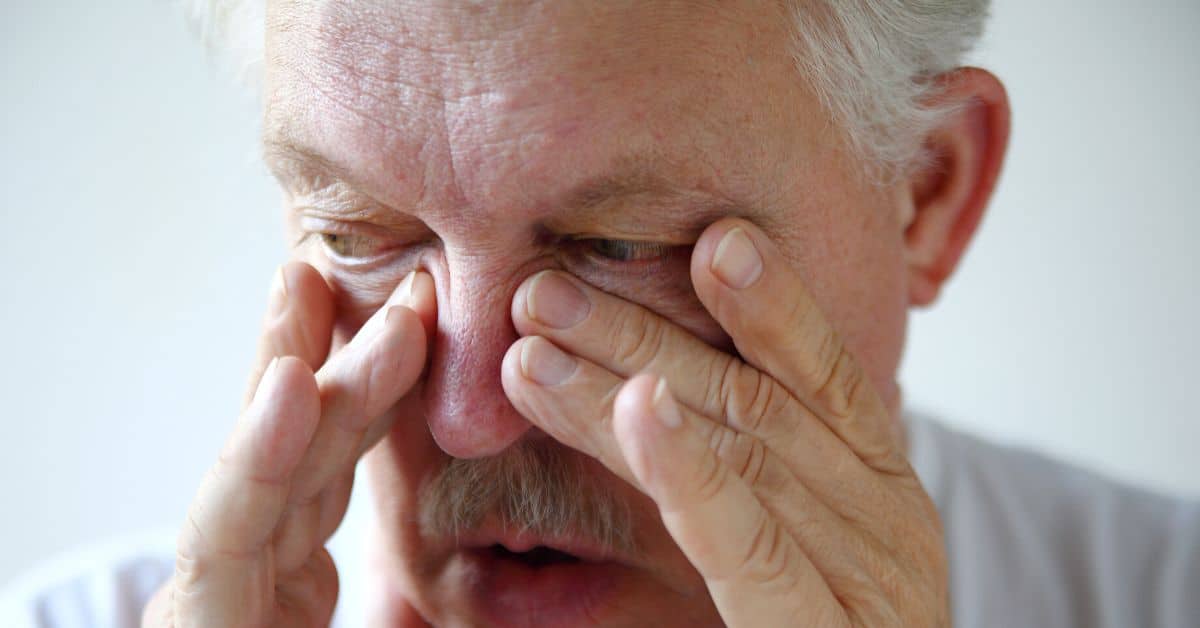There are several reasons why breathing can be difficult. Various factors such as allergies, sinus infections, colds, or environmental factors can cause breathing difficulties, including the abnormal structure of the nose, such as deviated septum.
Another prevalent cause of breathing issues is the collapse of the nasal valve. It can develop in various ways, and the main symptoms are nasal congestion, obstruction, and difficulty breathing through the nose. Various non-surgical and surgical treatment options are available to improve quality of life from nasal airway obstruction.
What are Nasal Valves?
The nasal valve is the narrow portion of the nasal airway, located in the middle to lower part of the nose. The primary function of the nasal valve is to limit airflow.
There are two types of nasal valves – internal and external. The external nasal valve is the nostril, made up of the columella, the nasal floor, and the nasal rim. The nasalis muscle dilates the external valve during inspiration. The internal nasal valve is between the nasal septum and the lowest portion of the upper lateral nasal cartilage inside the nose. The largest airflow resistance occurs in this region.
The nose plays a primary role in airflow resistance, and most of this occurs in the anterior part of the nose.
What is Nasal Valve Collapse?
Nasal valve collapse occurs when the nasal valve weakens or narrows, leading to inward collapse, causing breathing problems. The condition is also known as nasal valve stenosis. Nasal valve collapse can occur due to aging, injury, surgery and can be even congenital.
The nasal valve is a narrow segment of the nasal airway, with lots of airflow resistance occurring in this area. The nasal valve’s function is to limit airflow.
The nasal valve can collapse on one or both sides of the nose. It can occur at any age. It is not a severe condition, but it can look aesthetically unpleasant, and in some cases, may cause severe breathing issues and snoring. People having this condition may find it difficult to sleep soundly through the night.
Types of Nasal Valve Collapse
Weak cartilages in the nose can cause one or both valves to collapse, leading to nasal congestion and obstruction. The collapse can be external or internal.
-
External Nasal Valve Collapse
External valve collapse may be apparent while breathing inward, and the nostril on one or both sides may close partially or completely. Upward orientation or weakening of the cartilages in the tip of the nose can cause the external valves to narrow on breathing in.
External valve collapse may also occur with rhinoplasty procedures. The external valves may weaken if the lower lateral cartilages have been partially removed. Skin and cartilage widening between nostrils or a deviated septum into one nostril will also result in external valve narrowing.
-
Internal Nasal Valve Collapse
Internal valve collapse may be less visible on the outside, but the upper middle portion of the nose may narrow significantly with inspiration on either side. Weakening or narrowing of the upper lateral cartilages can cause a collapse of the internal valve while breathing in. The narrowing can occur if the septum deviates towards the valve.
Causes of Nasal Valve Collapse
Nasal valve collapse occurs due to either a natural cause, injury, or nasal surgery. When there is a severe nose blockage, this can cause pressure to build up in the nasal cavity.
Injuries such as a bruise can also injure the cartilage lining of the nasal valve, which can result in deterioration and collapse of the nasal valve over time. Sometimes, severe infection can also weaken and collapse the nasal valves due to extensive tissue swelling. Inflammation can also damage the cartilage in the nose, leading to its collapse.
Nasal valve collapse can also occur due to obstruction in the nasal passage causing the tissues and bone to shift and fill with fluid. Over time, the fluid builds up against the walls of the nasal passages, which causes them to expand and collapse the nasal valves.
Respiratory conditions such as asthma or sleep apnea can also occur due to nasal valve collapse. In these cases, there is scar tissue formation around the nasal membranes, creating an obstruction and causing them to collapse inward.
Congenital conditions can also cause nasal valve collapse.
Nasal valve collapse can be a potentially life-threatening problem if not diagnosed and treated appropriately. The nasal valve collapse can induce breathing issues and even airway obstruction. Based on the nature of the collapse, one may choose from conservative treatments to surgical procedures.
Signs and Symptoms of Nasal Valve Collapse
Individuals with nasal valve stenosis may experience nasal congestion and difficulty breathing inward from the nose. The symptoms may make it difficult to perform physical activities and even prevent you from participating altogether.
Some people may also find it difficult to breathe while lying down, making them breathe through their mouth. It could also result in snoring and poor sleep quality.
Below are some of the signs of nasal valve collapse:
- Nasal Congestion and Dryness: The first sign is nasal congestion and dryness, leading to snoring, irritability, or dizziness due to the lack of air getting through the nasal cavities to the lungs. These symptoms can be quite severe.
- Nasal Discharge: Some people may experience rhinorrhea, nasal discharge associated with other symptoms such as earache or headaches. Sometimes the nose may even fill with fluid which can lead to a stuffy nose and sinus pressure. There can be crusting around the nostrils too.
- Intermittent Pins and Needles in Peripheral Face: Discomfort or pins and needles around the nose may also indicate nasal valve collapse. A patient may also experience facial swelling, eye discharge or pain, and toothaches on the same side.
- Nosebleeds: Some people with nasal valve collapse experience nosebleeds regularly. When they do, it could be the result of a severe sinus infection or even a fungal infection in the nose or another tissue affecting the nasal lining.
- Snoring: Snoring can also be an indicator of nasal valve collapse. Extra soft tissues may cause sounds in the nasal cavity, and you may even feel congested when you wake up in the morning.
- Difficulty Swallowing: Swallowing may be difficult because nasal valve collapse may cause a decrease in the amount of air that goes into the throat. In addition, heavy snoring can also reduce the amount of air that enters the throat through the mouth.
- Facial Pain and Toothaches: Patients may experience facial pain and toothaches on the affected side of the face.
Nasal valve collapse symptoms are often similar to other nasal and sinus problems. If you experience any of the above symptoms, seeking medical attention would be a wise decision.
Diagnosis
Consultation with an ENT doctor will help diagnose nasal valve collapse. Since deviated septums and enlarged turbinates also cause similar symptoms, the doctor will perform a thorough evaluation to make an accurate diagnosis.
An endoscope will be performed to look deep inside the nose and examine if the nasal valve is collapsed or damaged. The patient will be given nasal decongestant spray or drops to help widen the blocked passage before the endoscope is passed.
Other tests that may be required to determine the etiology are:
- Cottle’s Maneuver: The cheek is pulled away from the nose for a few seconds to widen the nasal valve area. If the breathing improves with the manual widening of the nasal valve area, it indicates nasal valve collapse.
- Bachman’s Maneuver: Instruments are used to widen the nasal valve, and improvements in breathing are evaluated.
- Anterior Rhinomanometry: A pressure-sensing tube is used to measure nasal airflow. The patient is made to sit upright and asked to blow their nose. The pressure-sensing tube inserted in one nostril measures nasal airflow.
- Acoustic Rhinometry: Sound waves are used to evaluate changes in the nasal cavity.
Treatment for Nasal Valve Collapse
Nasal valve collapse can be treated conservatively and surgically. Treatments may vary according to the severity. Mild symptoms can be treated using conservative measures, whereas severe symptoms would require surgical procedures.
Nasal valve collapse is typically treated by clearing obstructed airways through nose surgery. However, if symptoms are minor, then sufferers may not need treatment at all. Proper nasal hygiene may help alleviate the symptoms.
Treating nasal valve collapse is a complex process and most often involves surgery. However, there are some alternative treatment options available to avoid surgery.
Non-Surgical Treatments
Non-surgical options are ideal for people that have mild symptoms and do not necessarily require surgery.
- Nasal Dilators
Nasal dilators are tubes that are filled with saline and used for nasal dilation. There are a wide variety of nasal dilators, each of which aims to treat a specific condition. It is made of FDA-approved plastic material and does not cause any irritation on the skin around your nostrils.
The purpose of these dilators is to keep your air passageways open and prevent them from collapsing again. It will also help filter out bacteria and viruses from causing any infection or allergy symptoms.
Nasal dilators for young individuals usually have soft tips. However, some nasal dilators have rigid tips that may need to be adapted for older individuals. Adults can use the fixed tip inserts too.
For the nasal dilators, the nostrils must be kept moist so that the nasal valve does not collapse again. Saline solution can be sprayed into each nostril once or twice per day and can be done during showering or bedtime. After spraying, ensure your throat is clear of any liquid.
Although this treatment does not entirely repair the nasal valve collapse, it can help with breathing and speech problems when used in conjunction with other therapies. The doctor can customize the size of the nostril dilator to fit comfortably in your nose and not cause any irritation.
- Balloon Sinuplasty
Sinuplasty involves inserting what is called a balloon into the nose. This procedure is appropriate when there is no obstruction and the collapse of the tissue in the nose is not severe enough to warrant surgical correction.
The technique involves inserting a thin, flexible plastic catheter into the septum, which allows the elasticity of this tissue to expand and contract with regular breathing action. The balloon is then gently pushed up inside the nose until a gentle resistance. The pressure provided by this resistance is what helps reduce the collapse of the tissue in the nose.
An important consideration is that this procedure requires a doctor’s approval and requires the assistance of an ENT surgeon.
- Decongestive Therapy
It involves using a series of techniques and steps to help reduce or even eliminate nasal obstruction. Decongestive therapy is best done as the first line of treatment before surgery for Nasal Collapse.
This process may include using special devices to help reduce swelling, pulsating your sinus cavities, changing the way you breathe through your nose, and even surgery if needed.
- Nasal Pills and Steroids
You can also use various nasal sprays and decongestants. These are ideal for those that have mild symptoms since they provide only temporary relief. Also, you can treat this condition through medications and steroids, depending on what the doctor recommends.
Getting diagnosed early to receive treatment that is also effective can help reduce symptoms and prevent nasal valve collapse from causing general health problems.
Surgical Treatments
Surgical intervention is the most common and preferred option. The surgical options may vary depending upon the severity of the collapse, the individual’s age and health, and personal preferences.
There are several different approaches to surgery. These include cartilage graft, septoplasty, turbinoplasty, and open rhinoplasty. These procedures are slightly different as each addresses specific parts of the nasal collapse.
- Cartilage Graft
Generally, a piece of the cartilage from the back of one’s nose or upper airway is transplanted into the nasal floor, typically in the front nasal valve area. The transplant helps to reinforce and strengthen this area making it less likely for it to collapse again.
However, some risks are associated with this type of procedure, including a higher chance of collapse of the internal nose lining. Sometimes, the graft may loosen over time, causing one to go back for a second surgery to remove the loosened tissue. Another problem is that sometimes the graft can cause an allergic reaction in some patients. Some patients have also reported having long-term pain due to graft.
So when considering a cartilage graft, one must weigh the pros and cons of the procedure to be sure that it is suitable for them specifically.
- Septoplasty
Septoplasty is performed to treat the collapse of the cartilage in the middle of the nose. In addition to this, it is also done to fix other issues that arise from nasal valve collapses, such as breathing and nasal drainage problems.
This surgery usually involves a short incision that is placed inside the nostril. The collapsed tissue is then removed, and a new framework or support structure is put into place, which will keep everything in place until healing occurs.
- Turbinoplasty
Turbinoplasty is done when there is a collapse of the inferior turbinate. It usually happens when there are allergic sinus symptoms. The surgery involves making a small incision in the anterior part of the nostril.
The collapsed tissue is removed, and any tissue that may be blocking some of the nasal airways. Then, a new support framework is placed and secured with sutures and splints to keep in position while it heals.
- Open Rhinoplasty
Open Rhinoplasty is done to fix the collapse of both the nasal valve and turbinate. It is also done for other issues associated with nasal valve collapses, such as breathing and drainage problems.
An incision is made in the nostril and then cartilage. The collapsed tissue and other tissues that may be blocking the nasal airways are removed. A new support framework will be put and secured into place with sutures and splints to remain in position while it heals.
Later, a plastic surgeon can perform a secondary rhinoplasty to make the nose look more aesthetically pleasing. In this procedure, the bones of the nose are altered according to the patient’s desire.
Several risks are associated with rhinoplasty, including bleeding, infection, asymmetry of the face, and scarring.
The treatment cost depends on the surgeon’s location and the type of surgery that is being performed.
Recovery After Surgery
It generally takes a few days to about a week for full recovery from the surgery. Patients may experience some nasal congestion for a while after the surgery, which mostly subsides on its own over several weeks.
Following aftercare instructions may help through the recovery process:
- Drink plenty of fluids to keep your system flushed and hydrated.
- Restrict activities to minimize strain on your nose and throat.
- Ensure to speak with your surgeon about what is safe for you to take while still healing and recovering from surgery.
- Attend follow-up appointments with your surgeon to monitor your healing and ensure that everything is healing correctly.
- Avoid wearing glasses or putting anything into your nose until the doctor clears you.
- Don’t blow your nose or participate in contact sports.
- Avoid taking aspirin or ibuprofen for the pain since they prevent clotting and cause bleeding excessively.
Associated Risks
- Anesthesia: Some patients may react to anesthesia. It is significant to discuss with the anesthesiologist before proceeding with surgery.
- Infection: Some patients may develop an infection following the procedure. These are typically managed with antibiotics.
- Bleeding: Patients may have bleeding episodes after surgery. Typically, the surgeon will order blood work before the procedure to ensure the patient is fit to proceed with surgery. The surgeon will verify all the patient’s medications and supplements to minimize bleeding risk.
- Local Reactions: Local reactions may occur due to sutures, taping material, ointments, and nasal packing during surgery and postoperatively. Patients allergic to certain materials or adhesives should discuss with the surgeon.
- Poor Wound Healing and Scarring: Patients with underlying medical conditions may take a little longer to heal or may be prone to poor wound healing and scarring. It is crucial to understand the risks before starting on a treatment strategy.
- Altered Sensation: There may be changes in sensations in the nose, such as pain or numbness. These are rare and most often temporary.
- Need for Revision Surgeries: Sometimes, multiple surgeries may be required for best functional and aesthetic outcomes.
- Recurrent or Persistent Nasal Airway Obstruction: Rarely, some patients may develop persistent or recurrent airway problems due to poor wound healing or scarring. In such cases, patients may require secondary surgeries to optimize outcomes.
- Nasal Septal Perforation: A hole may develop in the septum, but most often do not cause any problems. Development of crusting, bleeding, and breathing difficulties may necessitate secondary surgeries for repair.
Does Insurance Cover Nasal Valve Collapse Surgery?
Since nasal valve surgery is not considered elective or cosmetic surgery, most insurers will cover part or all of the surgery, anesthesia, and facility fees. It is a “functional surgery” that will improve the quality of life.
The nasal valve collapse surgery could cost around $4,500.
Conclusion
Generally, most people make a full recovery relatively quickly following the surgery. They find their symptoms to be greatly improved or completely alleviated with overall improved quality of life.
There may be instances where people find partial or no improvement in their symptoms following surgery, and secondary surgeries may often be a possibility.









